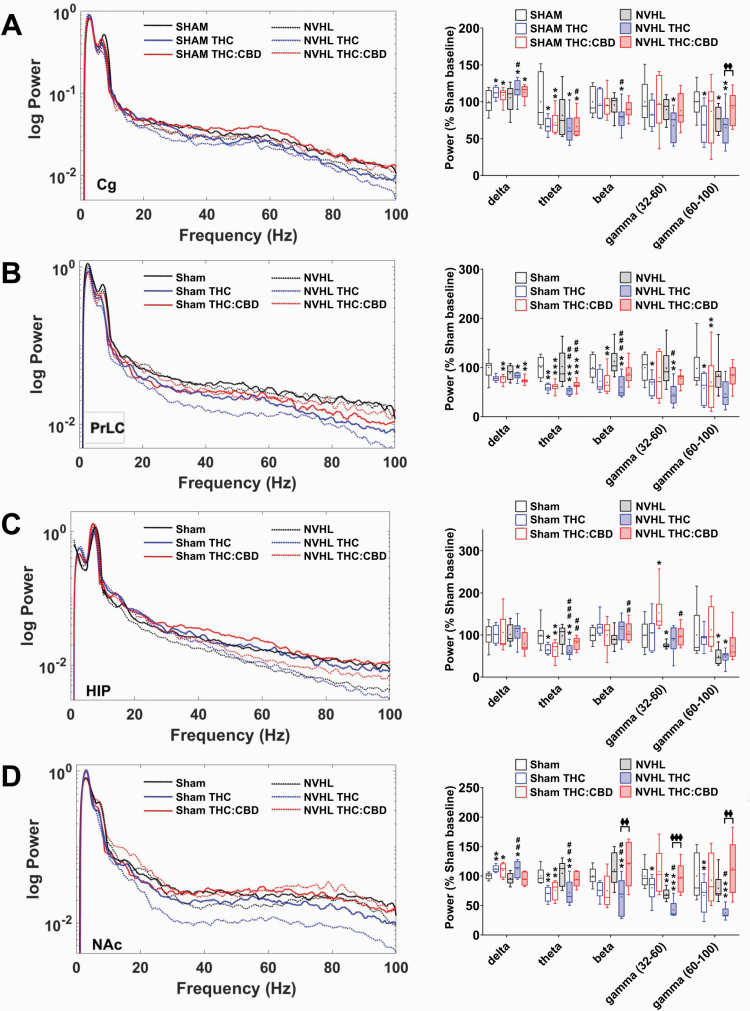Fig. 2.
NVHL rats exhibit reduced baseline spectral power compared to sham rats, and cannabis vapor differentially modulates this dysfunction. A) Spectral power tracing (left) and quantification (right) in the Cg showing baseline deficits in high-gamma power for NVHL rats (N = 5 rats, 10 recordings per region) compared to sham rats (N = 5 rats, 10 recordings per region); THC-only vapor reduced Cg beta and low-gamma power only in NVHL rats, an effect that was no longer apparent after Balanced THC:CBD vapor exposure; Balanced THC:CBD vapor exposure also attenuated the high-gamma baseline deficit in NVHL rats; both exposures enhanced delta, and reduced theta, power in the Cg of all rats; B) In NVHL rats, THC-only vapor exposure suppressed PrLC beta power while the THC:CBD-vapor exposure did not; for all rats, both exposures reduced theta power, and delta power to a lesser degree, while THC-only vapor exposure reduced both low- and high-gamma power; Balanced THC:CBD vapor exposure did not have any effect; C) In the HIP, NVHL rats showed baseline deficits in low- and high-gamma power, compared to sham rats whereas Balanced THC:CBD vapor exposure appeared to marginally improve baseline deficits; both exposures did not affect delta power and robustly suppressed theta power in NHVL and sham rats. D) In the NAc, NVHL rats showed baseline deficits in low-gamma power, compared to sham controls; THC-only vapor exposure reduced spectral power across all other frequencies in both NVHL and sham rats; THC:CBD exposure did not change from baseline measures any frequencies for NVHL rats, and selectively changed the gamma frequency band for sham rats. *P < .05; **P < .01 compared to sham control baseline; ##P < .05 compared to NVHL rat baseline; φP < .05 compared THC-only treated rats to THC:CBD treated rats.

